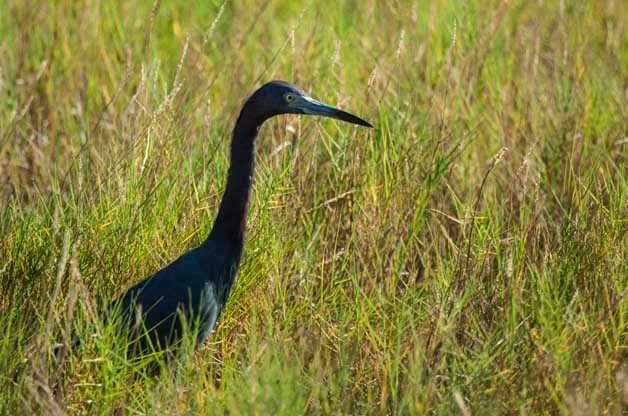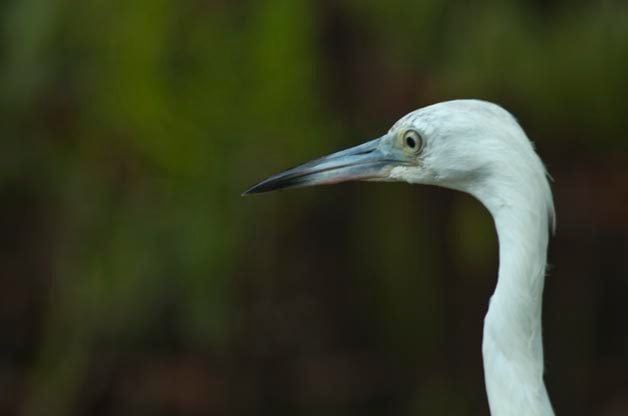Bird Species Profile: Little Blue Heron
Updated: Apr. 24, 2020
Check out my top 5 interesting facts about Little Blue Herons!
As I head to Florida this weekend for a family wedding, I’m already dreaming of all the wading birds that I might be able to see in the area – even when I’m not birding! Little Blue Herons are one of the birds that tend to be very plentiful no matter where you are in Florida and, for that matter, most of the Southeastern United States. This particular species is one that first sparked my wife’s interest in birds and birding when she saw them super close to us during a vacation to the Outer Banks in North Carolina back in 2008.
Check out my top 5 interesting facts about Little Blue Herons!

1. One of the things that has always amazed me about the Little Blue Heron is that although they don’t breed in the Midwest where I live, they can be found here in the late summer, and it’s almost always birds that were hatched earlier in the summer that arrive. This bird species post-breeding dispersal into the Midwest doesn’t happen every year, but we have been finding a lot of Little Blue Herons in Indiana in 2014. You can see all of the reports of Little Blue Heron on eBird from this year here.
2. Although adult Little Blue Herons are dark blue, the young birds are all white. This makes them look more like Snowy or Cattle Egrets than it does an adult Little Blue Heron!

3. As the white young Little Blue Herons begin to molt into their adult plumage in the spring, they get a pied or patchy look with both white and dark blue feathers.
4. Little Blue Herons are about half the height and have half the wingspan of Great Blue Herons.
5. The Little Blue Heron’s population is unfortunately making a slow decline. Even though breeding sites are protected, the wetlands that they feed in are disappearing. You can learn more about the conservation issues that this bird species faces here.
